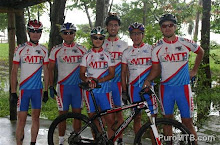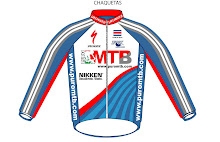ing.JPG)
Hydration
The athlete who wants to optimize their performance needs to continue good nutrition and hydration, use supplements and aids with care ergogénicas, minimizing the heavy loss of weight and eat adequate amounts of different foods. It is inevitable to start talking about the water, which is the most abundant component of the human body (approximately 65% of our body is water), then that is considered the human being like any other living organism. Water is a nutrient non-energy (heated), but essential for our body is kept properly structured and in perfect funcionamiento.De the same way that water is essential for the body, the maintenance of the water balance is essential for any human being. Any imbalance of it may negatively affect the physical performance and endangering the health of the body (and Veicsteinas Belleri, 1993).
For athletes, water losses are highly increased, thus significantly increase the requirements for water. In extreme conditions, the water needs can increase 5 to 6 times higher than normal, the risk of dehydration which, depending on their length, decrease athletic performance and / or endangering the health of the athlete (Iturriza et al., 1995) . Among the sports with a high risk of dehydration, we can highlight cycling. Cyclists tend to have larger problems of dehydration because the cycling sweat evaporates quickly, which makes them underestimate his loss of fluids (Helzer-Julin, 1994).
The replacement fluid during exercise helps to maintain plasma volume during the period, helping the Heat and cardiovascular homeostasis (Cheung et al., 2000). Also, the intake of fluids during exercise provides an energy source with carbohydrate, completing the reserves spent, and supplying water and electrolytes to replace those lost by sweating (Maughan and Noakes, 1991). In this way, there are several general rules are easy to follow for the replenishment of fluids. The generally accepted standard for hot climates, where cyclists, which is standard drink two bottles of water (0.6 liters) per hour and have a clear urine urination at least every hour and a half. The inability to urinate or issuing a yellow urine indicates dehydration (Helzer-Julin, 1994).
Brouns (1991) says that during the exercise, the state of hydration of the body can be influenced by several factors such as the taking of fluid before the competition and during the competition in relation to the losses. It also recommends visiting the bathroom 30-45 minutes before the start of the test to urinate and defecate, as both factors can influence the behavior of fluids during the competition. To that dehydration does not affect our sport performance is necessary to the proper rehydration during the exercise.
Authors: Graduates in Science, Physical Activity and Sport, and fellows of the Faculty of Physical Activity and Sport at the University of Leon. (Spain) Lic. Juan Herrero Azael Alonso. Lic. René González Boto. Lic. David Lopez Garcia. Excerpt from Digital Magazine - Buenos Aires - Year 9 - No. 66 - November 2003 To see note complete: http://www.efdeportes.com/efd66/hidrat.htm





